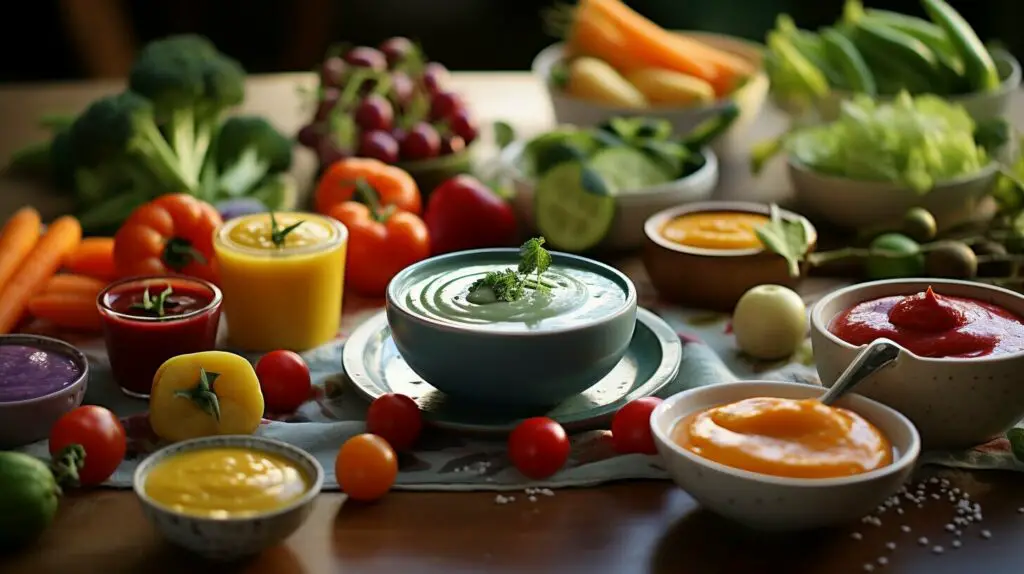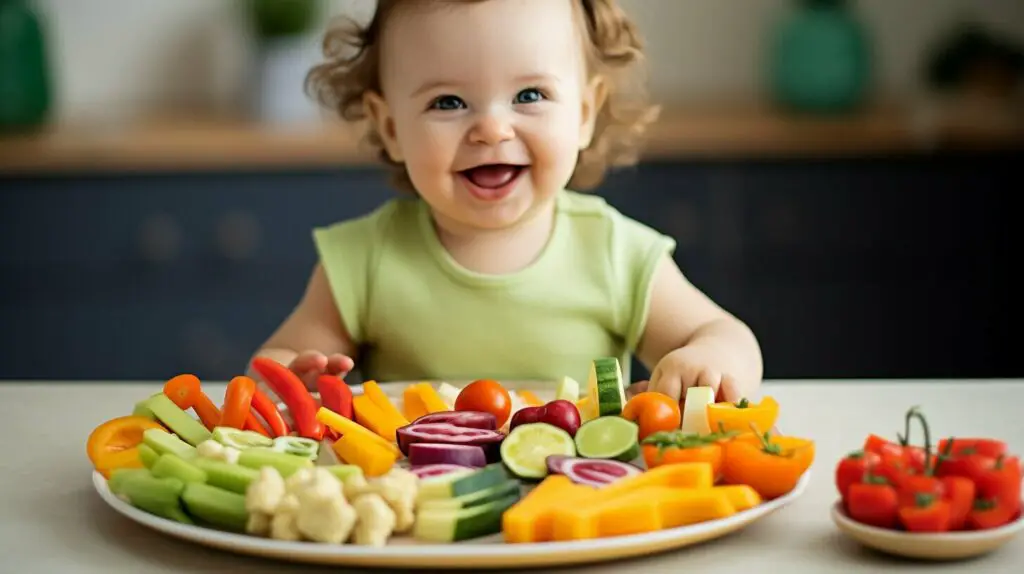As a busy parent, you may wonder if it’s safe to freeze your baby’s food. Can baby food be frozen? The answer is yes, but there are some important facts and tips you should know to ensure the safety and quality of your baby’s meals.
Freezing baby food can offer convenience while preserving the nutritional value of your baby’s meals. Moreover, it can save you time and money in the long run. In this article, we will explore the best practices for freezing baby food, whether it’s homemade or store-bought.
Key Takeaways:
- Freezing baby food is a safe and convenient way to preserve meals and ensure your baby’s nutrition.
- Proper storage, thawing, and food safety practices are crucial.
- Both homemade and store-bought baby food can be safely frozen.
- Consult with a pediatrician if you have any concerns about your baby’s nutrition.

Safety Measures for Freezing Baby Food
Congratulations on taking the leap to prepare baby food at home! Freezing homemade baby food is a great way to ensure that your little one is getting fresh, nutritious meals without any preservatives or additives. However, it’s important to take some necessary safety measures when it comes to freezing baby food.
Here are some tips to ensure the safety of your frozen baby food:
- Always start with clean hands, utensils, and cooking surfaces.
- Make sure the food is cooked thoroughly before freezing.
- Allow the food to cool to room temperature before putting it in the freezer.
- Use freezer-safe containers or bags specifically designed for baby food. Glass jars can break and plastic bags may not be durable enough.
- Avoid filling the containers or bags to the top as the food will expand upon freezing.
- Label and date your frozen baby food containers to keep track of how long they have been stored.
- Store the frozen baby food at 0°F or below and use it within 1-3 months for the best quality and taste.
Here are some other safety tips to keep in mind:
- Don’t refreeze thawed baby food. Once it has been thawed, it should be used within 24 hours.
- Avoid using ingredients that are potentially hazardous, such as honey, until your baby is at least one year old.
- Never serve baby food that has been left out at room temperature for more than two hours.
By following these safety measures, you can ensure that your baby’s frozen food is fresh, healthy, and safe to eat.
Freezing Homemade Baby Food
If you prefer making homemade baby food, freezing can be a great way to save time and ensure your baby has fresh meals on hand. Here are some tips for freezing homemade baby food:
| Step | Description |
|---|---|
| 1 | Cook your baby food as usual and let it cool down. |
| 2 | Use small airtight containers that are freezer-safe. |
| 3 | Label the containers with the food name and date, so you know what you are freezing and when it was made. |
| 4 | Freeze the containers immediately to maintain freshness. |
Note: You can also consider freezing baby food in ice cube trays for smaller portions. Once frozen, remove the cubes and store them in freezer bags labeled with the food name and date.
When it comes to thawing, take the container out of the freezer and let it defrost in the fridge overnight. Alternatively, you can put the container in a bowl of hot water to speed up the process, but never use a microwave as it can create hot spots and cause burns.
Tip: It’s a good idea to freeze small amounts of a variety of foods, so your baby has a choice of flavors to try. Also, avoid adding salt, sugar, or spices to homemade baby food as it can overwhelm their taste buds.
Freezing Store-Bought Baby Food
If you rely on store-bought baby food, you’ll be happy to know that it can be safely frozen. However, there are a few guidelines to follow to maintain the safety and quality of the food.
Here are some tips for freezing store-bought baby food:
- Check the expiration date and make sure the food is still within its recommended shelf life before freezing.
- Transfer the baby food to a freezer-safe container with an airtight lid. Glass jars, plastic containers, and silicone trays are all suitable options. Make sure to label the container with the date and type of food for easy identification.
- Store the baby food in the freezer at 0°F or below to prevent bacterial growth. You can freeze store-bought baby food for up to 3 months.
- When it’s time to thaw the baby food, place the container in the fridge overnight or use a warm-water bath. Avoid thawing at room temperature or in the microwave, as this can cause uneven heating and potential foodborne illness.
- Once thawed, stir the baby food and check the temperature to ensure it’s at a safe level for your baby’s consumption. Discard any leftovers that have been sitting out at room temperature for more than two hours.
If you have any concerns or questions about freezing store-bought baby food, it’s always best to consult with your pediatrician.
Freezing Fruits and Vegetables for Baby Food
Freezing fruits and vegetables can be an excellent way of adding variety to your baby’s diet. It also maintains the flavor, texture, and nutritional content of the fruits and vegetables.
To begin, make sure you have thoroughly washed and peeled the fruits and vegetables. Cut them into small sizes, ensuring that they are manageable for your baby. Using a blender, puree the fruits and vegetables to the desired consistency. You can opt to mix different fruits and vegetables to create a unique blend.
When storing the puree, you can use small, airtight containers that are freezer-safe. Leave an inch of space at the top of the individual containers to allow for expansion during freezing. Label the containers with the date of preparation to keep track of the storage period.
When freezing, it’s best to avoid glass containers as they can expand and break during freezing. We recommend using BPA-free plastic containers or food-grade silicone trays. Silicone trays are an excellent option since they allow you to freeze individual portion sizes and easily pop out individual portions.
When it’s time to thaw the frozen puree, remove the container from the freezer and place it in the refrigerator. Allow the puree to thaw overnight, or for at least 8 hours, before serving it to your baby. You can also leave the container to thaw at room temperature for a few hours, depending on the temperature of the room.
It’s important to note that while frozen fruits and vegetables can be a great addition to your baby’s diet, they should not be a substitute for fresh fruits and vegetables. Always try to incorporate fresh produce in your baby’s diet whenever possible and freeze only what you need for a short period.
Conclusion
Congratulations! You’ve now learned the important facts and tips for safely freezing baby food. Remember, proper storage is key to maintaining the quality and safety of frozen baby food. Always label your containers with the date and type of food, and never refreeze thawed food.
When it comes to thawing frozen baby food, you have a few options. Thaw in the fridge overnight, or heat in a saucepan or microwave. Always check the temperature before serving to ensure it’s not too hot.
Lastly, never forget the importance of food safety. Always wash your hands and kitchen surfaces before preparing and serving baby food, and discard any food that shows signs of spoilage. Consult with a pediatrician if you have any concerns about your baby’s nutrition or feeding habits.




